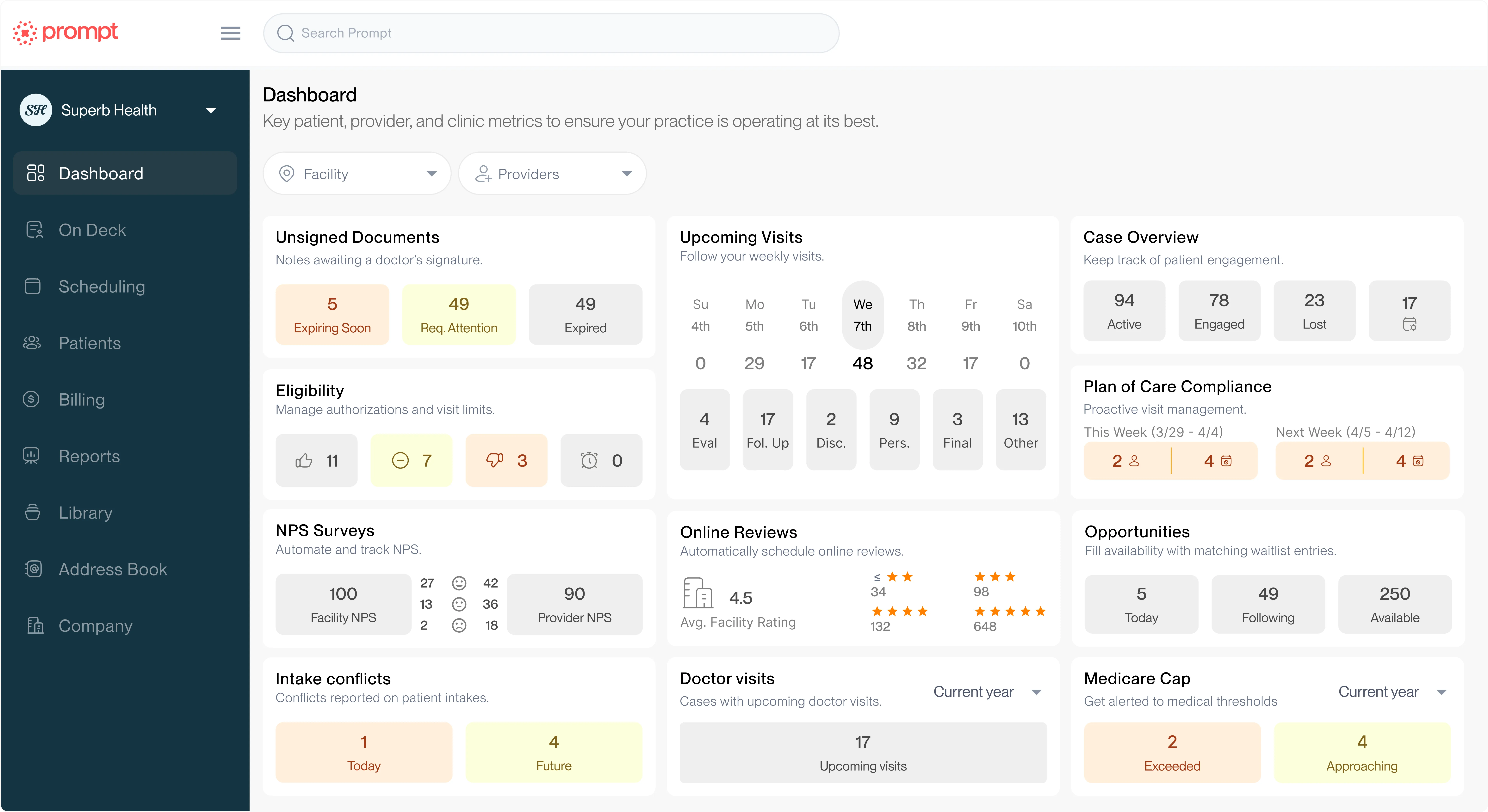See Prompt in action!


Rehab therapy practices must balance delivering exceptional patient care with maintaining financial sustainability. One often overlooked avenue for improving revenue is optimizing CPT coding practices.
By leveraging advanced AI tools like AI-powered analytics and real-time scribing, practices can align their billing with documentation and treatments, unlocking significant financial opportunities while reducing compliance risks.
In physical therapy, the four most commonly used CPT codes fall into two categories:
This distinction isn’t a comment on clinical efficacy but reflects reimbursement trends. Across practices nationwide, an optimal mix for financial and clinical alignment is about 60% high-value codes.
This ratio often aligns naturally with functional treatments that improve patient outcomes. However, only 25% of organizations achieve this benchmark, meaning most leave significant revenue on the table.
Before we discuss the financial implications of aligning CPT coding to meet the 60% benchmark for high-value or functional codes, it’s important to understand a bit more about this goal.
Higher-value activities (and their associated codes) throughout an episode of care, such as musculoskeletal injuries, increase patient retention during the episode.
When fewer functional activities are used, patients tend to fall off faster and often don’t finish their episode of care.
In other words, patients perceive more value from their care when a clinician provides high-value activities and is more likely to complete their full course of treatment, leading to better outcomes.
When comparing lower-performing practices (25th percentile) to higher performers (75th percentile), the financial gap becomes stark. Moving from 45% to 60% high-value code utilization could result in:
This potential gain underscores the need for smarter billing practices. But how do clinics achieve this shift without overhauling their workflows?
Historically, improving CPT coding practices required labor-intensive processes:
These methods often yielded incremental progress with great effort. Enter AI-driven solutions, which streamline the process and produce faster, more consistent results.
Prompt Insight and Sidekick (formerly PredictionHealth) help rehab therapy practices understand where their greatest risks lie in CPT coding and to guide therapists at the point of care to deliver better accuracy in coding.
Insight analyzes every chart's documentation to identify patterns in the documentation and highlight opportunities to improve future coding accuracy.
These retrospective analytics are used to tailor training approaches and help organizations apply improvement efforts and resources directly to their greatest opportunities for improvement.
While retrospective analysis is important to ensuring clean claims and timely approvals, it's not the only way to ensure your therapists are coding correctly.
At the point of care, Sidekick suggests appropriate codes and reminds therapists to include necessary justification statements, reducing guesswork and ensuring compliance in real time.
Prompt pulled data from its user base to examine the impact of retrospective analytics and monitoring and real-time CPT coding interventions on CPT coding diversity. Here's what the data reveals:
Clinics using historical insights saw a 12% increase in appropriate functional CPT code utilization within 12 months.
However, there was also a slight (3%) rise in overuse of these codes, likely due to heightened awareness but insufficient education or guidance.
Sidekick users achieved similar improvements in functional CPT code usage within one month. This is a process that typically takes 8+ months with retrospective methods.
Importantly, inappropriate high-value code usage dropped by 1%, demonstrating better compliance.
AI helped elevate low performers to the level of top-tier documenters, closing the gap between average and high-performing providers in coding accuracy.
This rapid improvement translated to substantial financial gains while reducing compliance risk.
The power of real-time intervention lies in influencing behavior where it happens. When therapists receive immediate feedback on their documentation, they are more likely to:
This approach not only improves billing practices but also fosters a better therapist understanding of documentation requirements, enhancing their confidence and reducing administrative burdens.
For years, practice leaders have struggled to improve coding accuracy and revenue outcomes through sheer effort. AI solutions like analytics and scribing represent a paradigm shift, enabling organizations to achieve remarkable results faster and with less effort.
With the right tools, rehab therapy practices can optimize their revenue potential without compromising care quality or overburdening their teams.
By aligning documentation, billing, and treatment seamlessly, practices unlock financial benefits and greater satisfaction for providers and patients alike.
Are you ready to take your coding practices to the next level? Explore how Sidekick and Insight can transform your clinic’s financial and operational outcomes today.
Help your practice grow
From intake to insights, Prompt is the all-in-one platform you need